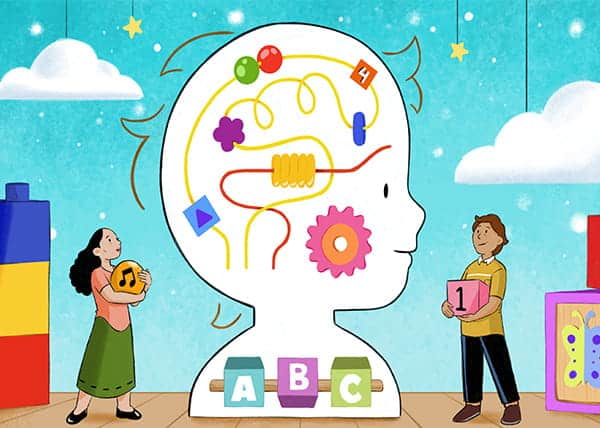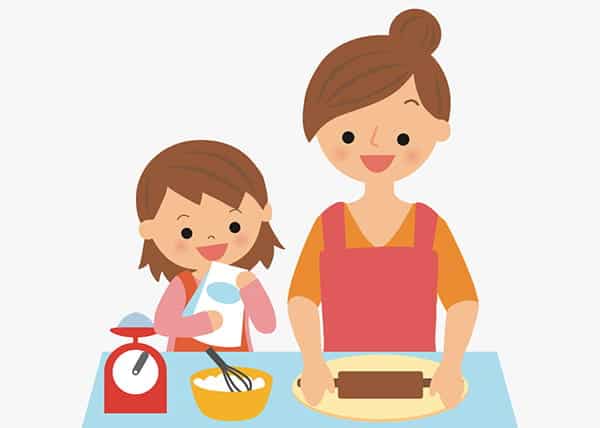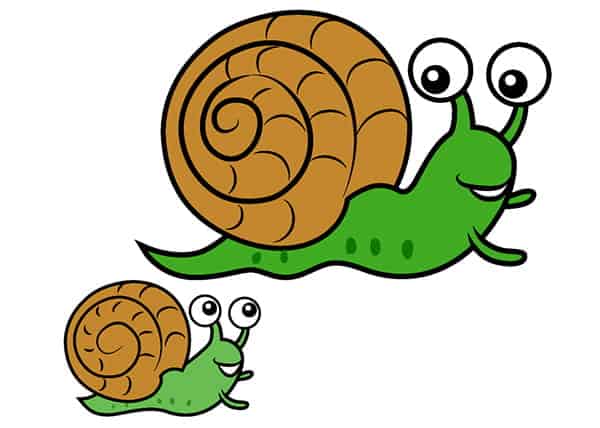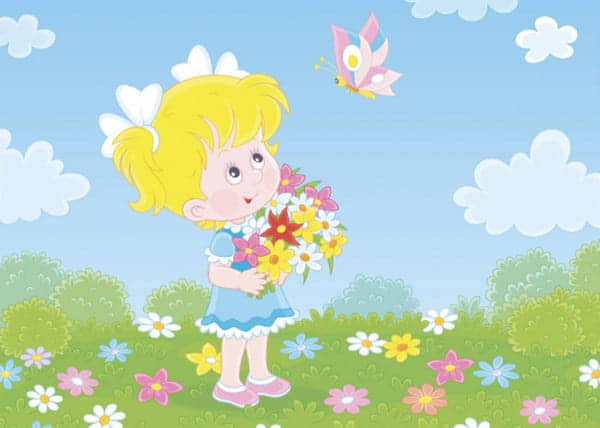And here we are! The transition from toddler to a preschooler with a 3 years old child. We can really notice a small person now with her own wishes, needs, and personality. We also noticed new interests and a need for learning about everything around us! So let’s explore what brings the end of the second year!
Article Contents
1. Emotions are here to stay2. Learning frenzy
3. How similar are we?
4. Running out of time? What time?
5. Do we need this? Of course! We need everything!
This article is all about the last quartal of the 3rd year and the entrance into the fourth year of a child’s life. If you are more interested in what to expect from childbirth till the first year, you can check the first year of a child’s life section. And if you want to know more about what to expect from a child between 1 and 2 years of age, you can check the second year of the child life category.
Emotions are here to stay
I’m now officially calling quits on mentioning “jumps in development”. It is just pointless since there is no period when there is not something that looks an awful lot like that. In truth, preschool years are a period of intense emotions and brain development. Some research suggests it takes five to seven years to reach “calm”, what we call self-regulation or maturity.
Yep, you heard it right, this will take a while.
In this period, you may notice your child is getting more specific with their ideas and upset if you misinterpret them. It’s not helping that these ideas are so often part of their imaginations. For example, our girl is playing with a pig figurine and I ask “Hey, what is mama pig digging there?”. She gets upset and yells “No! That’s not a pig, that’s a pink unicorn!”.
Sometimes, we don’t understand what she is saying and there are days when she gets very angry or sad about that. Why did you hear “x” when I said “y”?

They want to be heard, understood, and appreciated, like everyone. They have all these amazing ideas and they are getting better at expressing them. But it’s still hard to comprehend that we can’t read their minds and know what they are knowing. It takes patience. And lots and lots of emotional coaching. “Oh, yes, you said … and I heard …. It can be upsetting when I don’t understand you. I’ll come closer to hear you better.” Even a simple “Sorry” can be powerful.
Someone would think, why should I apologize to my child when I took an effort in observing her activity and she yelled at me. And maybe tell us “this is what is wrong with modern parenting”. Yes, looking from our mature adult brain, this seems hard to understand, but for our little ones, we hurt them, we didn’t get them.
And it’s one of the most important things for them, that we, their parents, know them, to understand them. We must be “bigger” people here, not only because we are really bigger, but because we know this is how they learn to manage those strong emotions.
If somebody is upset and yells at you, you don’t yell back. You don’t cry. You try to understand, you keep your voice calm, you are offering peace and resolution, Observing and reflecting. You know that person is in a bad emotional state and if you don’t need to go there yourself. You are not triggered by this.
This is what we should be doing anyway. Do you? Not me, often not. This is so hard, maybe because many of our emotional turmoils in childhood resulted in humiliation, isolation, or physical punishment. This generation of parents needs to relearn some of those things. No, we weren’t bad, we didn’t deserve it and certainly are not better people for it. But we can look at things differently now and do better for our children. It’s never too late for growth and amends.
Expressing emotions is always good and we should never shame our children for doing that. Especially with those blanket statements “Being angry is not nice.” or “You shouldn’t cry for that!”. Not to mention still too often, gender stereotypes: girls should be happy, never angry and boys can be angry, but never sad. There is so much wrong with that.
Of course, some behaviors are not okay and here we need to put strong limits there. “You look so angry! You feel like hitting, I won’t let you hit me. You can yell loudly how angry you are.” No emotion is bad, they all show us something. We do this emotional coaching a lot, but it’s most effective when your child is calm. Then you can roleplay, talk about emotions, why we need them, what could we do if we feel angry, sad, excited… Talk also about joy, happiness, love – those are often overlooked, but bringing them up shows your child how emotions are beautiful and part of being alive.
Learning frenzy
In this period we noticed an increased interest in letters and numbers and big leaps in understanding both. Math and language are so complex! We, adults, tend to be intimidated by their rules and intricacies, but not children. Learning just happens for them. It’s a very natural process that doesn’t need micromanaging, rewards, or punishments.
Think about gaining a number sense. Many parents are very focused on getting their toddlers to recite numbers, but that’s not really helping that much. What do those numbers even mean?
Understanding numbers start with one-to-one correspondence. One rock means one thing. Two cups are two separate objects. Numbers represent something, different quantities of things. It’s not that important how those numbers look at this time or even to name them correctly. Basic ideas slowly build up. We counted a lot while walking, while reading, while cooking – just as the situation naturally arose. “Bring me two blocks. Oh, you brought me four! See, 1, 2, 3, 4. “

Using real, concrete objects is a way to go since toddlers are very practical and sensorial. She now has really good 1 to 1 correspondence and also knows names and sequences of numbers.
Recently, she got more interested in symbols and is slowly recognizing more and more of them. Similar is the case with letters. She knows many letters now, but that was not our goal. As we wrote previously, we played sound games for a long, long time. “Which sound do you hear in a dog?” “Let’s think of some animals on K!” “ I am thinking about one big mammal which starts on the letter E!”
She loves those! And our trips to stores or long drives in a car are perfect opportunities for them. She observed that sounds are connected to written letters and started to get curious about what it says here and there. Another fun thing was to look at car plates and check which city it is from. If it’s not our own, we read it and we tell her which city that is. So all of that, with time, made her knowledge and interest grow.
This is what I mean when I say that learning is natural. Not that it will happen in a vacuum and without any setup or engagement from us parents. Children need us to provide a rich environment, model love for reading and learning, and engage with them in a stimulating way. But it will happen when they are developmentally ready, not when we decide “it’s time to learn how to count or read”.
There are so many fun and (more) important things to do at this (and any) age. Let them experience mud, sand, and water and lots and lots of free, unstructured play. Sensorial and practical things.
We are here to provide possibilities to learn, but not to enforce it in any way. And that also means no quizzing them, correcting them, or showing them “right” ways to do the things they are doing (if not asked). Trust your child to know what they need to focus on and to figure it out themselves. They are always busy exploring something! Even when we don’t find value in it, it’s important to them.
We have much power as parents, but they really are their own persons. And we owe them respect.
How similar are we?
Speaking of being their own person, at moments, that little person will try very hard to be your doppelganger. Social learning is super powerful and the main way of learning about the world. They are observing, copying, repeating. And who better to observe and copy but you, the most prominent and influential person in their life. The main questions become “Do you like XYZ?” If you do, they do too. Imitation is the sincerest form of flattery, right?
It’s all fun and games until we notice they are copying some things we don’t like. Some things that are very annoying. It can be hard to explain why they shouldn’t do something when they learned it from us.
Using swear words comes to mind. Or leaving dirty shoes in the middle of the hallway. It’s a bit embarrassing but could be a good lesson for us. We don’t always do as we preach. So don’t preach. Guide and advise, but be aware of situational factors.

Example from our house. Often the jacket (and hat!) will stay on for a long time after getting in, just because she had a brilliant idea and she wanted to try it right away. Like preparing some special dinner for animals with things we got from outside. Reminding her to take off her jacket would ruin that focus and probably create rightful annoyance, for something that, truthfully, is not that important.
There are many other things like that. They will be done, but do they have to be done this very moment? We, adults, give ourselves a free pass on these kinds of things, because we know our situation and plans. We know we will do it, just a little bit later. But we need to give that same trust to our children. They will notice it eventually and if they don’t we can always point it out – “Oh, your jacket is still on!”. Just mentioning that like observation, without any judgment or annoyance is usually enough.
Sometimes, we find that this behavior is something we don’t want in our household and we will actively try to modify it. Usually, just modifying our behavior is enough to reduce it in our child – that’s how powerful social learning can be.
That need for being similar is very attachment-based. Developmental psychologist Gordon Neufeld is famous for his refinement of basic attachment theory and he conceptualized six phases of attachment.
After the need for proximity, in the second year comes the need for sameness. The child wants to be very similar to their attachment figure, do the same things, have similar opinions and interests, even copy language and mannerisms. This is how a child shows love and affection to you. And only through respecting this attachment need, will you have a strong and beautiful relationship with lots of positive interactions. You will have that bond that makes guiding your child look “effortless”.
But you know how much effort went into getting to this point. Remember there is no such thing as “too much attachment”, just the opposite, there can’t be enough of it. So go with it, talk about all the ways you are similar, all the things you have in common, and do things together. That just means you are the most important person in their life at this moment.
Running out of time? What time?
Oh, boy. In this quarter, planning or doing something on time has become quite an achievement. There is always something to finish and then, there are a couple of more distractors that draw attention from the goal.
Nowadays, just a simple activity, like going outside to fresh air, takes around an hour to do. Similar is with going to sleep or eat. Always something to do before those magical words – “now I’m ready!”.

From a child development angle, this is something great! This shows that a child has a rich imagination and is immersed in the most important activity in this age – play. There is always a new idea on the horizon that needs to be tested or done. We can’t leave plastic animals hungry, can’t we? So it’s wonderful to observe a child reaching that flow when he/she is totally immersed in the activity. And we shouldn’t interrupt that flow whenever it’s possible.
Sadly, it’s less and less possible if we intend to stay on our desired schedule. And here is where difficulties start. On one hand, when we interrupt a child in its activity and impose something we want, we can expect resistance in different shapes. Children will get frustrated and may react in emotional outbursts and defiance. But that is nothing unexpected. Imagine yourself if someone took the remote and turned off your favorite TV show in the middle and said: “Let’s go outside.” You would get frustrated too for sure!
On the other hand, we may get frustrated too with all that “just one more thing…” while we look at how all our plans are messed up. We can feel we lost too much time waiting for “just one more thing” to finish. But there is something we need to ask ourselves: “Is this thing that I had in mind so important?”
Of course, if you’re going to a doctor’s appointment you can’t really be flexible and come an hour later. But if your goal was to go outside, to the playground, is it really important to go? If the child is having a blast inside, what if you miss one outing? Or is it really important if you start launch 15 minutes later? Nothing bad will happen, right?
So if the answer is “no, it’s not that important”, you as a parent will have a much easier time. Children at this age already have their agendas and plans, and those plans won’t always align with our plans anymore. And we should take into consideration their wishes as we do with grownups.
What we found useful is, when we need to go on time, is to talk about it beforehand. Tell your child plans for the next day before. Talk about all the plans and activities, discuss what they would like to include and also what is mandatory for you. You will see, when they know what is the plan for the day, they will be prepared and much more willing to collaborate.
As for situations when they are in play and you want them to do something, it’s good to tell them what you expect of them and back off a bit. “Ok, I’ll wait here on the chair until you finish what you are doing, and then we will get dressed and go outside”. That usually works great and our little one finishes her plans in a couple of minutes and comes to us.
If we would say “Ok, let’s go” and took her from what she was doing, we would be treated, more often than not, with a strong protest and emotional outburst. And with all that, it would take 10 times longer than just give time to finish what she is doing. Not to mention how disrespectful that is.
Do we need this? Of course! We need everything!
This one is a pickle. Recently, our little one started to stockpile things. “Empty box? Give it here! Random rock? Going home with us! This strand of grass? Yes, the dinosaur will eat it! This piece of paper? Don’t you dare to throw it, it’s a chair for the squirrel!”
You got it, right? We started to stockpile many different things so we even have a nature box where we collect all the things we find outside. It can be challenging if we put things in the wrong place. If our little one can’t find that piece of the walnut shell she brought home 3 days ago, she will get really upset and sad.

The biggest challenge is when we grownups don’t communicate appropriately. Sometimes one of us can think there is some piece of paper that needs to be cleaned, but that is a bow tie for some of the animals.
We don’t mind picking many things and using them for play, it is excellent for stimulating imagination and testing how we can use different things we find outside. Not to mention, this is a great opportunity to study different plants from our environment.
But we can’t expect a 3-year-old to tell us clearly: “I brought this home to play with it, so don’t throw it away”. And we learned we shouldn’t assume anything and that random junk for us can be a precious piece of entertainment for the child. So we started to ask all the time. “Is this yours? Do you need it?” Well, the answer is mostly the “Yes, I need it!”
But how to prevent actual stockpiling and being burrowed in leaves and rocks in a couple of weeks? What we found useful is a surprise, surprise – preparation, and talking.
When she wants to pick something new outside, we may say: “Ok, you can take this leaf, but then we need to throw that bark we took 2 days ago so we make room for the leaf”. Or, when flowers or grass gets dry and starts to fall apart, we may say “Dinosaur is still eating that? Ok, then she may eat it today and in the evening we will throw what she doesn’t manage to eat”.
This mostly works like a charm because we didn’t disrespect her by just taking and throwing something of hers without question or preparation. So like with grownups, it is important to state our intention and make sure we are all on the same page for what is coming next.
And with this article, we come to the end of the “What to expect…” series of articles in the current format. Thank you for following with us the child development and sharing the magical parenting experience. From now on, we will focus on more general characteristics of development – with a dose of personal experience of course. We have recapped the first half of year 4 where we describe all about how it went.
If you’re searching for some great STEM Activities for Kids and Child development tips, you’re in the right place! Check the Categories below to find the right activity for you.

STEM Science
Videos, guides and explanations about STEM Science in a step-by-step way with materials you probably already have at your home. Find new Science ideas.
Read more
STEM Technology
Videos, guides and explanations about STEM Technology in a step-by-step way with materials you probably already have at your home. Find new Technology ideas.
Read more
STEM Engineering
Videos, guides and explanations about STEM Engineering in a step-by-step way with materials you probably already have at your home. New Engineering ideas!
Read more
STEM Math
Videos, guides and explanations about STEM Math in a step-by-step way with materials you probably already have at your home. Find new Mathematics ideas.
Read more
Psychology
Find out all about development psychology topics that you always wanted to know. Here are articles from child psychology and development psychology overall.
Read more
First year of Child’s Life
Following a Child’s development every month from its birth. Personal experiences and tips on how to cope with challenges that you will face in parenting.
Read more
One thought on “What to expect from a Three Years old Child?”